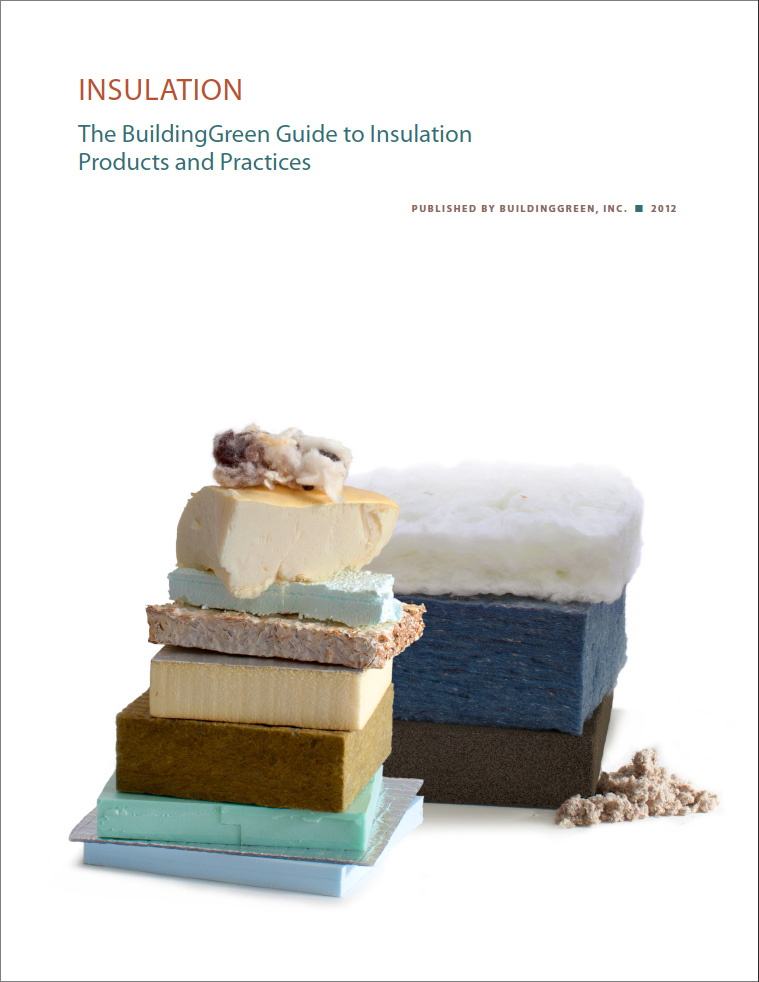Even our savvy readers had some trouble with BuildingGreen's insulation quiz. Does it really have to be this hard to choose the best insulation for your project?
While paying yet another $3000 heating oil bill this fall, a friend of mine decided it was time to bite the bullet and insulate her 97-year-old home. She mentioned to me offhand that her husband was interested in spray polyurethane foam (SPF) due to its unique performance characteristics: this material can serve as insulation, a continuous air barrier, and a vapor retarder. No other single material does all three.
However, knowing that my friend has adverse reactions even to the mild cleaning products used in her workplace, I told her that in rare cases SPF has caused serious indoor air quality issues. While these incidents appear to come up only when contractors don't follow proper installation procedures, they do seem to make some people very sick and can require invasive remediation when they happen.
"We better think hard about this," she replied after reading links I'd sent her from EBN and Green Building Advisor.
Which ball to drop?
Before you can decide what you think, you have to know which things to think about.
Making good decisions about insulation--or helping your clients make them--requires a thorough working knowledge of the relevant issues. When considering any insulation material, we have to keep in mind what is for most of us the least flexible issue--cost--while also juggling:
- embodied energy
- global warming potential
- offgassing risks
- potential for moisture and mold
- interactions with other materials in the wall, roof, or slab assembly
- structural properties
- durability
- vulnerability to insects
- fire resistance
- recycled content
- recyclability
- downstream effects of landfilling
- ability to source locally
- pollution from resource extraction and manufacturing
- social justice issues related to manufacturing
- building codes
- building certification requirements, including red-listed materials and energy performance standards
Keep in mind that the best jugglers on earth can only handle about seven balls at a time for any extended period. Based on results from our GreenSpec insulation quiz, juggling this number of insulation considerations at the same time is nearly impossible--even for you, our exceptionally well informed readers.
That said, it's better to choose which balls you want to drop based on your own and your clients' priorities rather than just letting them fall willy-nilly.
Finding your deal-breakers
Let's say that you, like my friends, want to maximize what you get out of your insulation by making sure it controls air leaks as well as conductive heat flow (see Part 1 for a primer on heat flow). Do you know which insulation materials are airtight enough to act as a dedicated air barrier?
More than 80% of our quiz-takers knew several materials that would not work: they chose "none of the above" from a list that included cellulose, fiberglass, and mineral wool. However, almost 13% of people who took the quiz thought cellulose could act as the dedicated air barrier.
This is actually a persistent myth that building scientists have been working to debunk for years. Here at BuildingGreen, we love cellulose for its exemplary environmental performance, but we shouldn't let that get in the way of the facts: cellulose is not an air barrier. It does a much better job at air resistance than either fiberglass or mineral wool, but only a handful of insulation materials act as an air barrier, and they are all petroleum-based.
If installing insulation that doubles as an air seal is a high priority for you, SPF might be the way to go. But if you or your client has known chemical sensitivities, even a tiny risk of reacting to SPF might be a deal-breaker for your project. Maybe cellulose is a reasonable compromise--but cellulose might not even work for the extremely sensitive, due to ink in the recycled newspapers that are used to make it. (Cellulose has other potential issues as well, like dust that can be an irritant and vulnerability to moisture.)
Decision-making tools for insulation
Most people make their insulation decisions based on information from manufacturers or installers, which can be problematic--not because they intentionally mislead people (although that can happen) but rather because it has not been their job to cut through greenwash and explain the complexities of building science, environmental considerations, health risks, long-term performance, and all the other issues associated with the panoply of insulation options available on the market right now--and then finish all that off by helping you weigh these considerations against your needs, your personal values, and the limitations of your pocketbook.
That's actually a pretty good description of what BuildingGreen is all about, though, and it's the reason we've added Alex Wilson's new Guide to Insulation Products and Practices to the independently produced resources we offer.
Alex offers a really handy table of BuildingGreen's bottom-line insulation recommendations to use as rules of thumb for various applications. But as we're hopefully communicating with this blog series, deciding what insulation to use for your project can get really tricky; it's a project-by-project decision that we can't make for you. So the book also gives you the tools you need to make different choices based on your own or your clients' priorities and special circumstances. It can be read from cover to cover or used as a reference tool.
If you haven't had a chance to take the insulation quiz, do head over now and test your knowledge. You might be surprised!
Finding the right balance
Incidentally, my friends have decided to fill their empty wall cavities primarily with blown cellulose but will also use SPF in various hard-to-reach places in the attic.
What would you have done?





Add new comment
To post a comment, you need to register for a BuildingGreen Basic membership (free) or login to your existing profile.